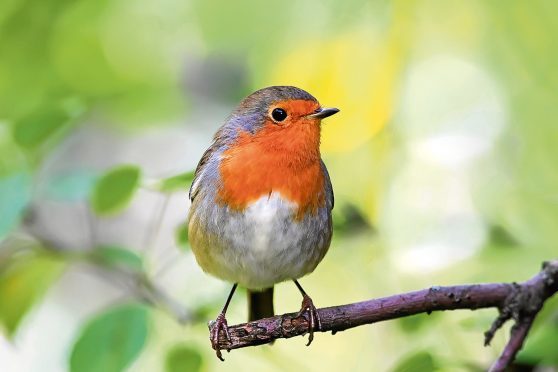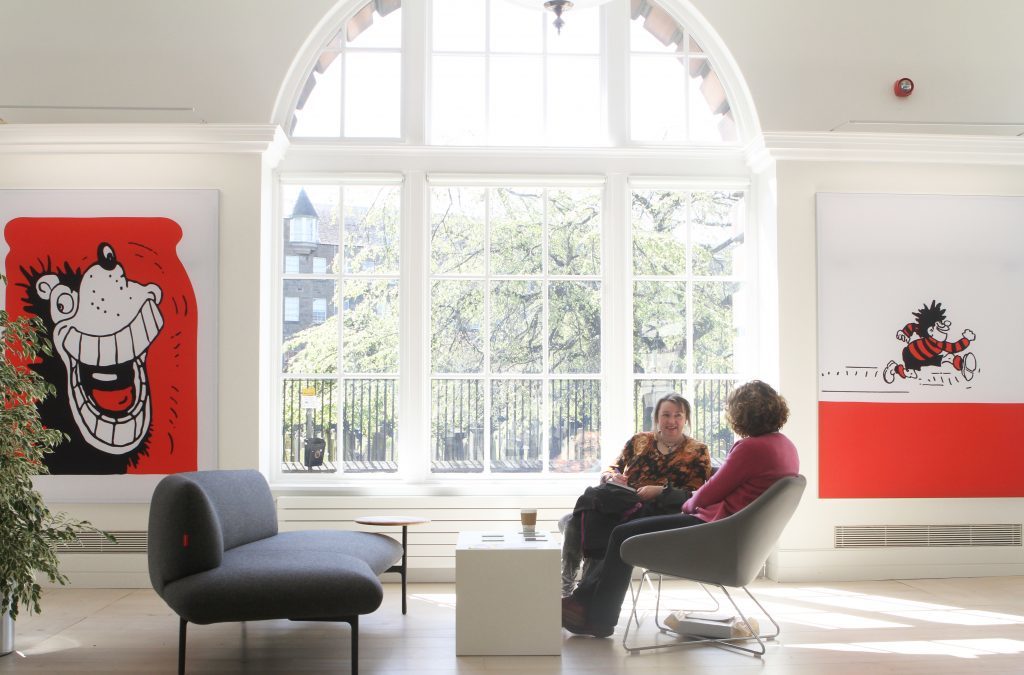The Christmas robin is depicted as a roly-poly, jolly, little bird with scarlet breast feathers epitomising all that is warm and cosy about Christmas.
The reality is that they are aggressive birds, ever ready to defend their territory against intruders either by threat or actual fighting. The red breast feathers are a part of their aggression mechanisms and a warning to adversaries.
Some years ago I reported a story from a reader who had been distressed to watch a robin fight and kill an intruder. At this time of year they are staking out their territories for the winter to ensure they will have a large enough area to forage for food for survival.
It was the Doyenne who noticed the pair in the tree outside the sitting room window squaring up to each other. It was clear which was the dominant bird, puffing up its red breast with much flicking of its wings and a flow of chattering song which, doubtless, in robin speak was a string of dreadful threats.
These stand-offs are mostly ‘full of sound and fury’, and while they certainly signify something, usually don’t last long. The intruder bird hopped round the tree, responding to the challenger and after some half-hearted wing flicking and shouting abuse back, gave up and flew off.
Tight lines
On Tuesday Inka and I walked up the west bank of the River North Esk from Inveriscandye steading. The river runs through the low plain of Strathmore and there are 360° views in all directions and always something that catches my attention. I met a salmon fisher who was in a right pickle because he had lost his rod in the undergrowth. With a cry of relief, he stumbled upon it – he’d been looking up stream when he should have looking down river.
The salmon fishing this season has been poor, by all reports, but he and his colleague had caught four fish the previous day, and a small cock fish – too small to keep – which had been returned to the river, which wasn’t a bad start to their week.
Nature’s bounty
As the agricultural harvest draws to an end, nature’s autumn harvest of berries and other fruits can be found on trees and shrubs along the riverbank. They’ll provide food for birds and small mammals as the weather hardens and the frosts come. The elder tree’s black, shiny berries are edible for humans. My father was an enthusiastic home winemaker – hedgerow cordials, he called them – and I went out with him when I was small to gather washing basketfuls of the berries. He never could do things in moderation.
A guelder rose by the side of the track had been nearly stripped of its deep scarlet berries. After seeing it in flower several years ago, we planted a bush in the garden.
Alders are common waterside trees whose fruit is not edible. They produce clusters of woody, cone-like catkins which hold the seed and which turn brown when the seed has been cast.
Other common fruits you’ll find at this time are beech mast and acorns which are favourites of pigeons. Sweet or Spanish chestnuts produce the edible nuts kids roast on the fire and mothers put into chestnut stuffing for the Christmas turkey. They grow in spiny cases which are murder to open to get at the nuts.
Another common hedgerow berry you’ll find on your walks are snowberries which, not surprisingly, are snow white. The shrub provides good shelter and cover for game birds and song birds. There seems to be conflicting advice about how poisonous they are but I prefer to leave them, anyway, for the pheasants, which are partial to them.
I’ve had feedback from last week’s column about curing night-time cramps with corks under your pillow. I am assured by a reader that the only truly successful remedy is a bar of soap in the bed at your feet – but the wrapper must be removed or it will never work. It’s probably all in the mind, but if you think you’re getting better, maybe you are.
The flitting
On Monday I was shown round The Courier’s new Dundee home. Well, not new because, of course, it was the paper’s home until it moved to the Kingsway East buildings it has just vacated.
What a transformation the old Meadowside offices have undergone. Walking into the entrance foyer is to walk into a cathedral of light and space – everything state of the art.
The features department, where my weekly ramblings are unravelled, is an island of calm and industry with clean desks quite unlike the cluttered madhouse I work in at home.
When the drive is for people to go online for their news, it is reassuring to see a newspaper committing so positively to the printed page.
I was whisked up to the “Vista Room”, which has a stunning panoramic view across the city’s rooftops, down the River Tay and up the river, and across to Fife. What a spot to sit for a day and watch the city’s wildlife.
Don’t Miss The Whitsons’ Kitchen – Angus and the Doyenne’s take on The Great British Bake Off – every Wednesday in The Courier.





